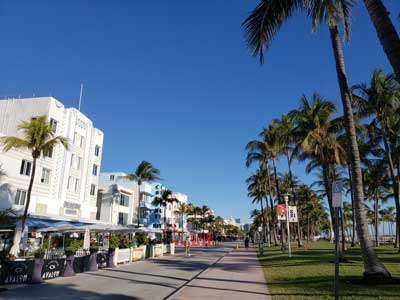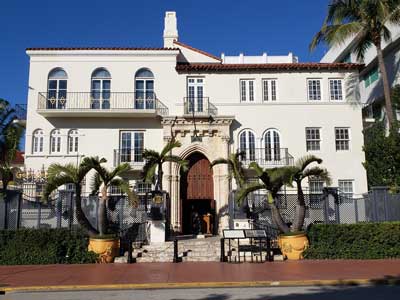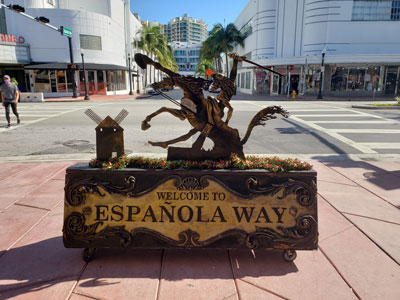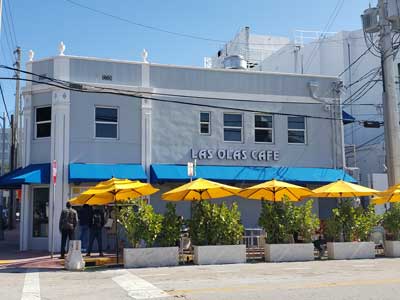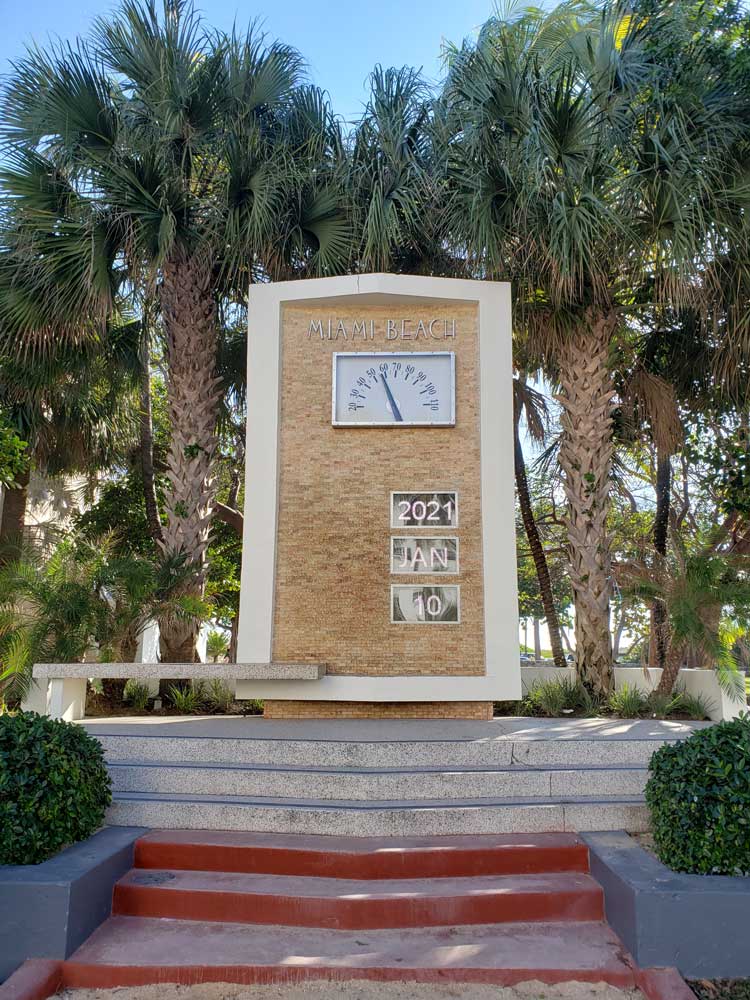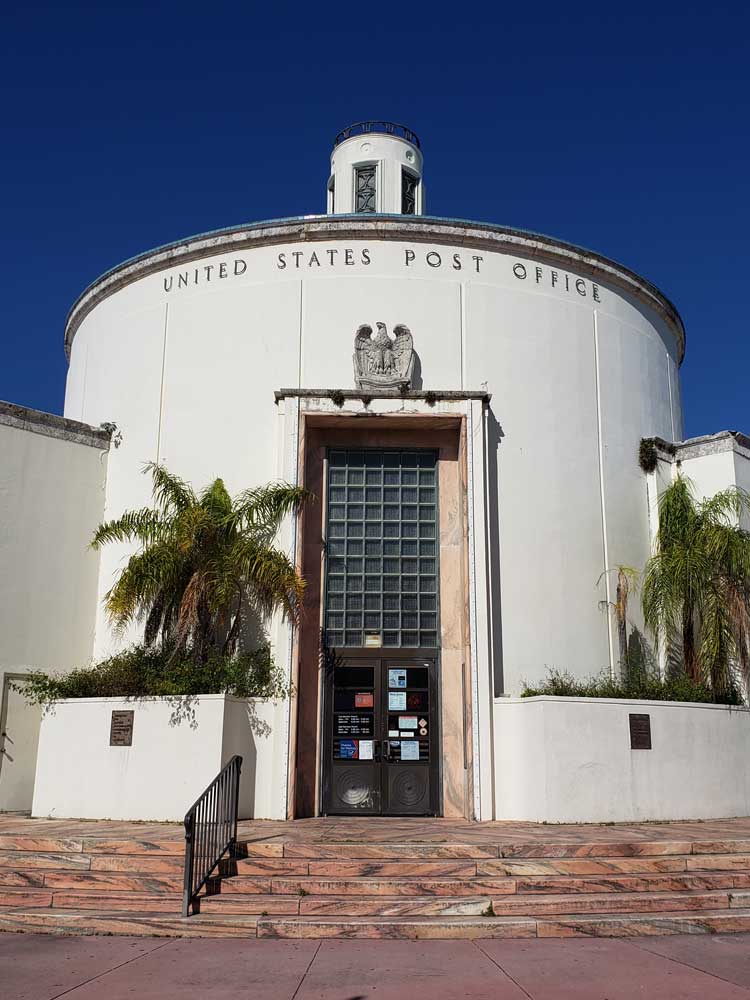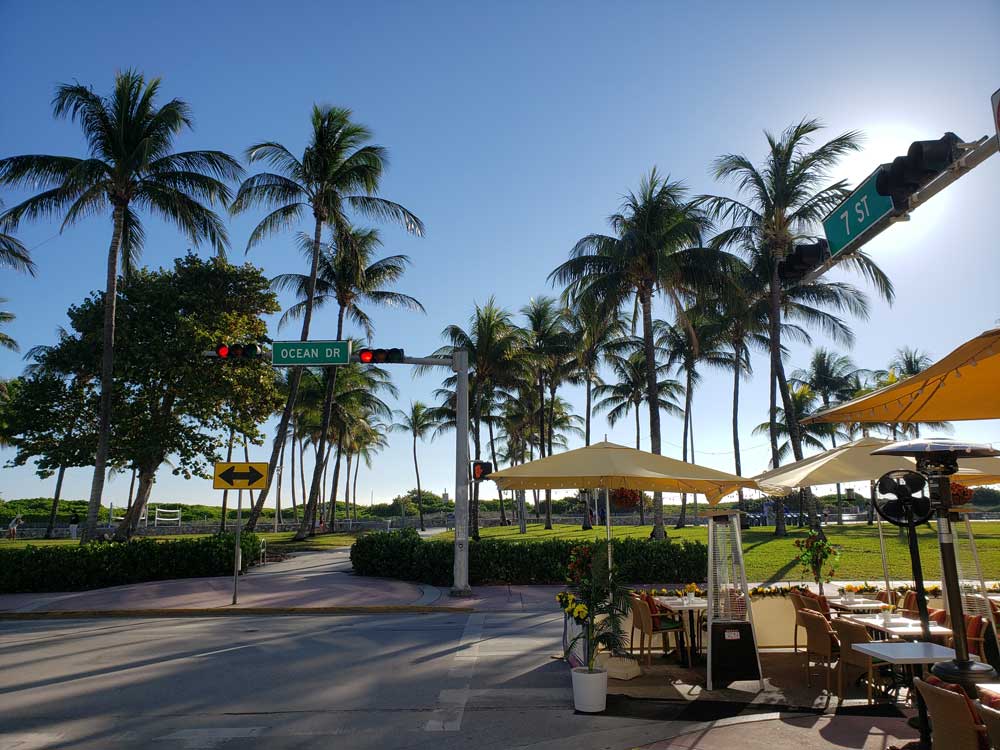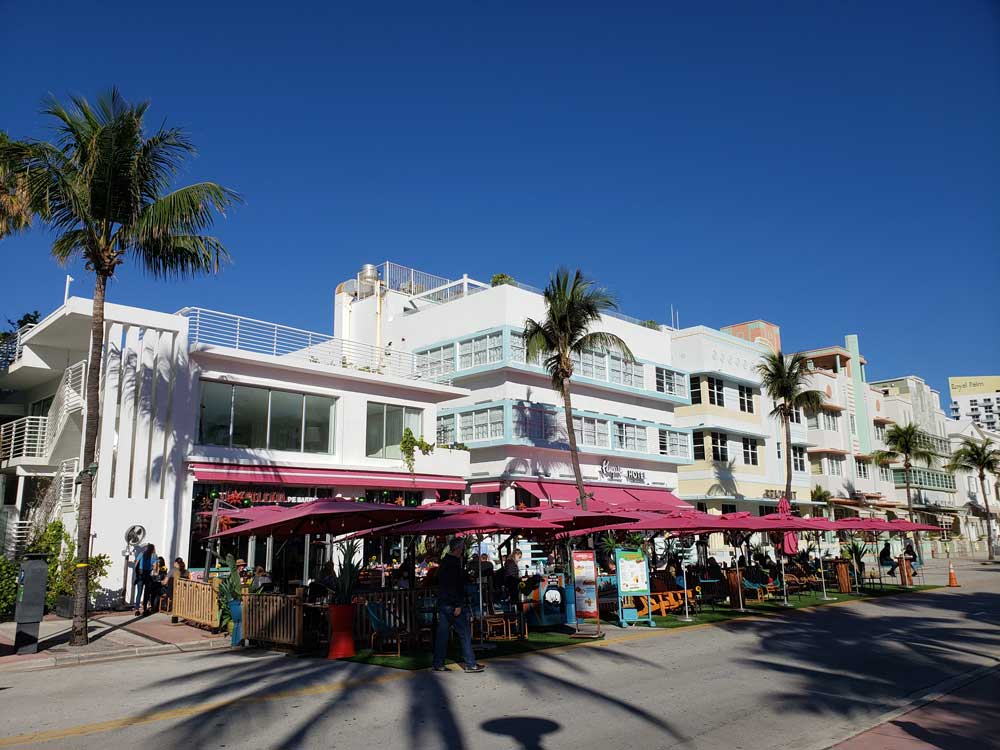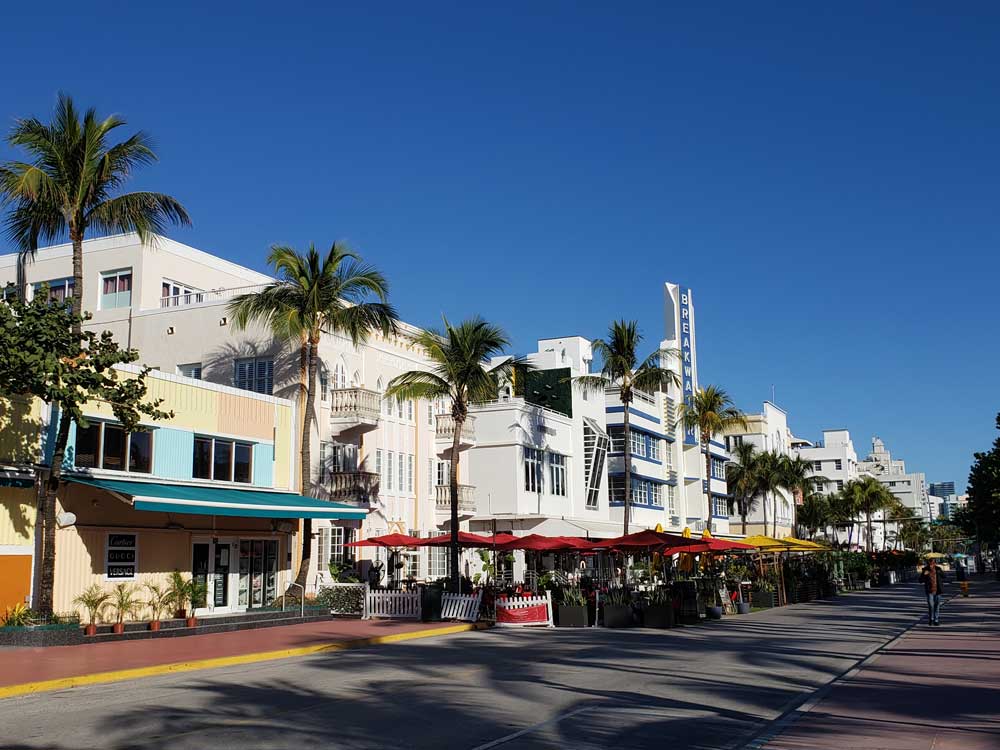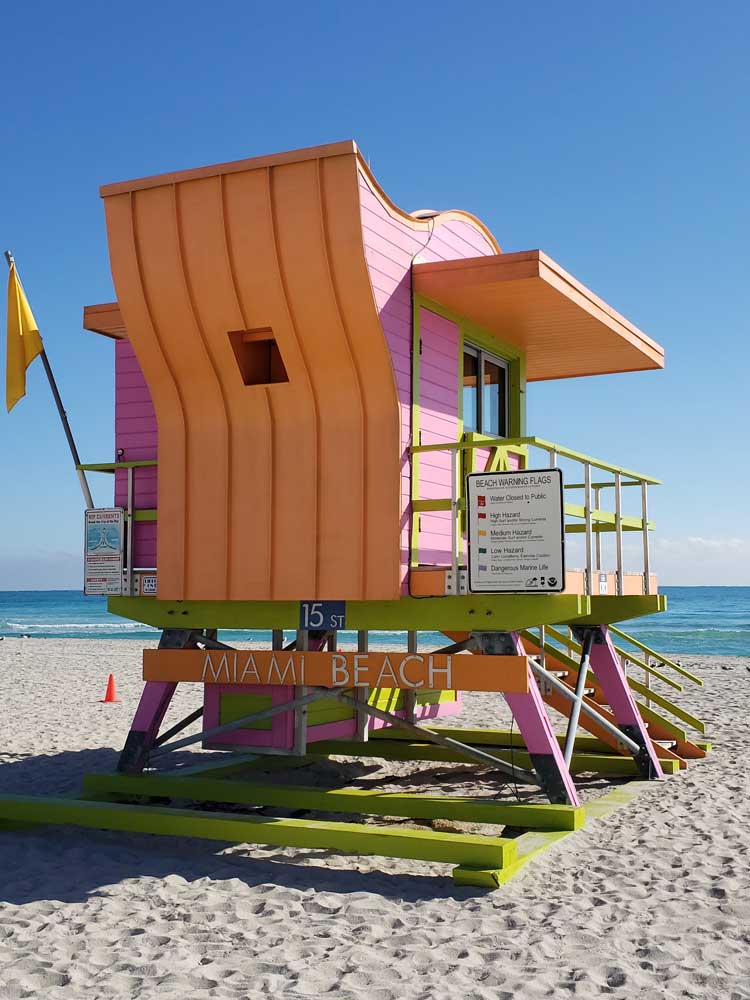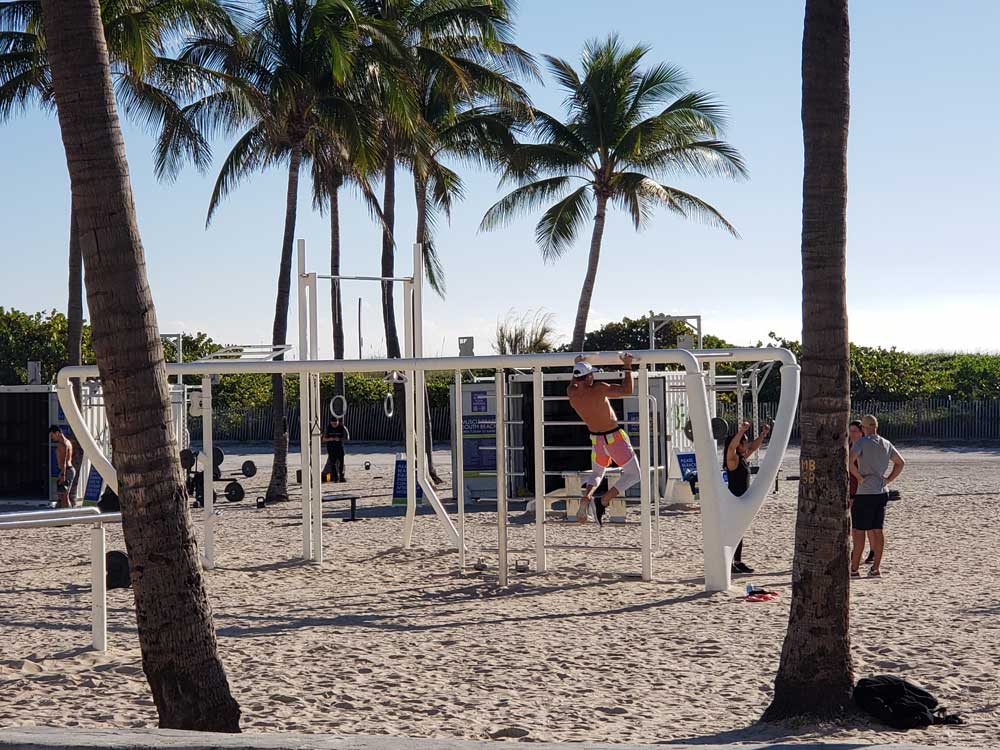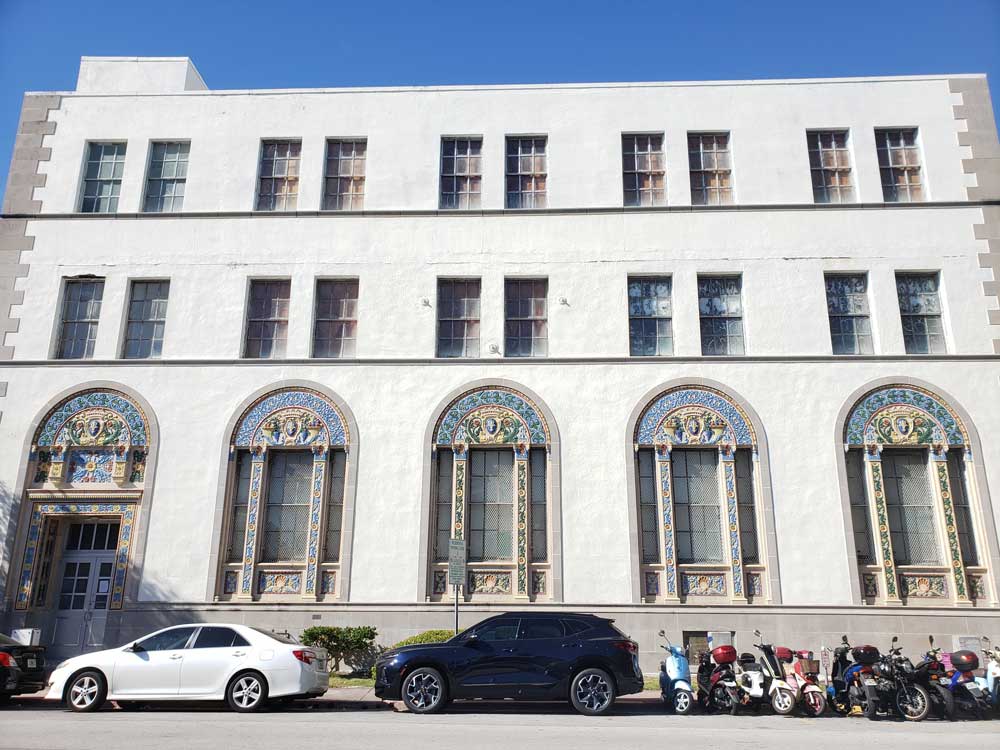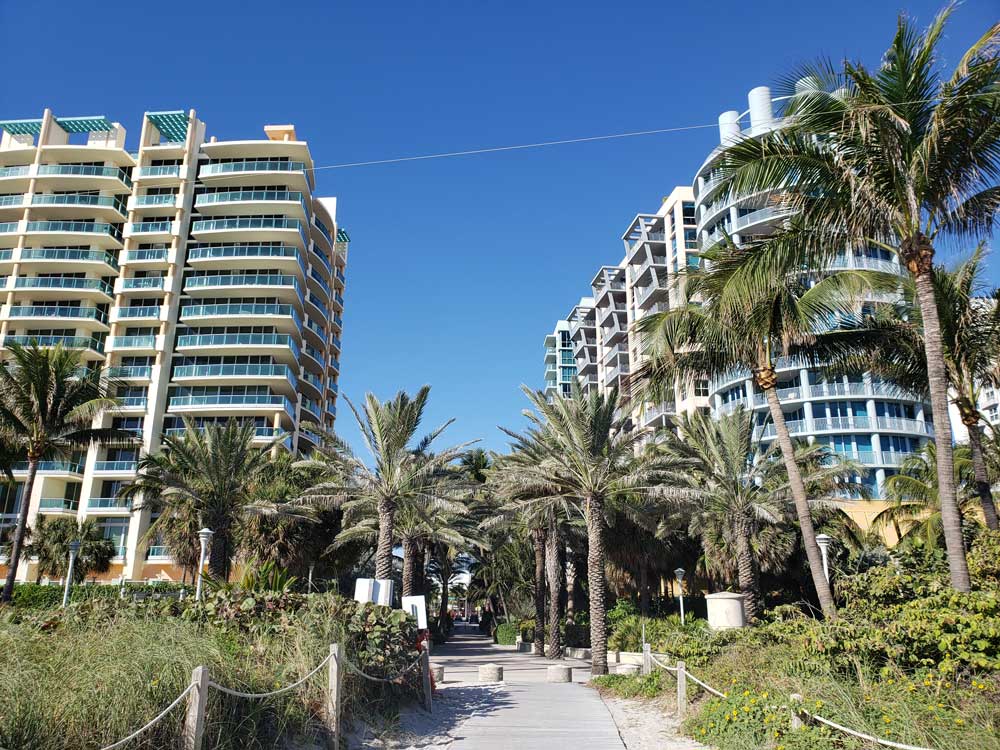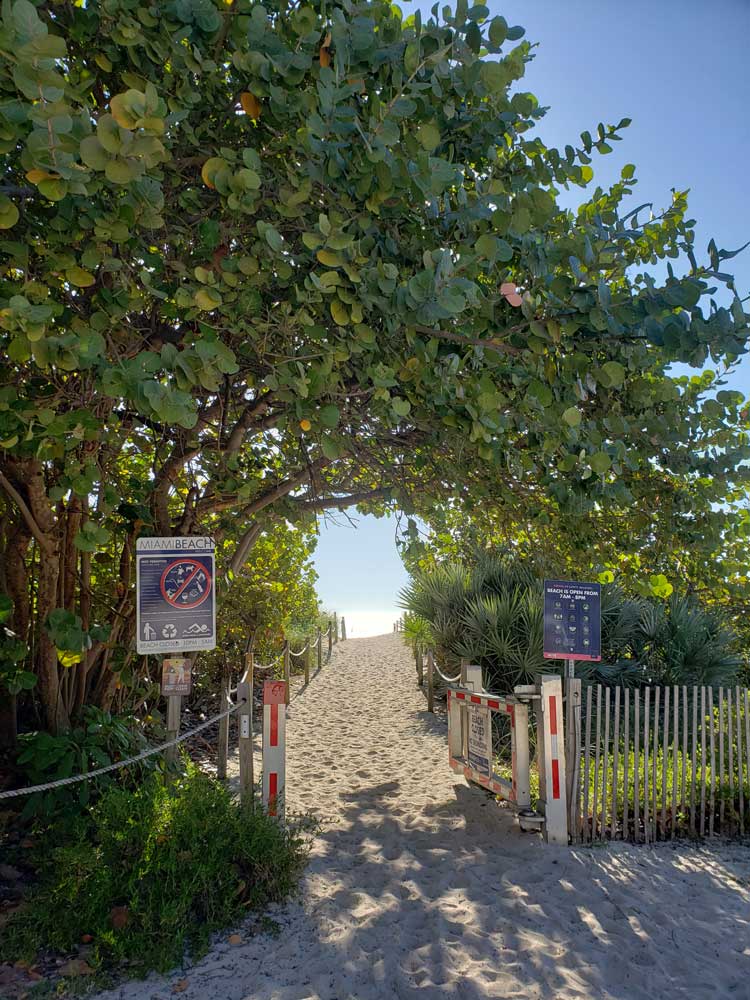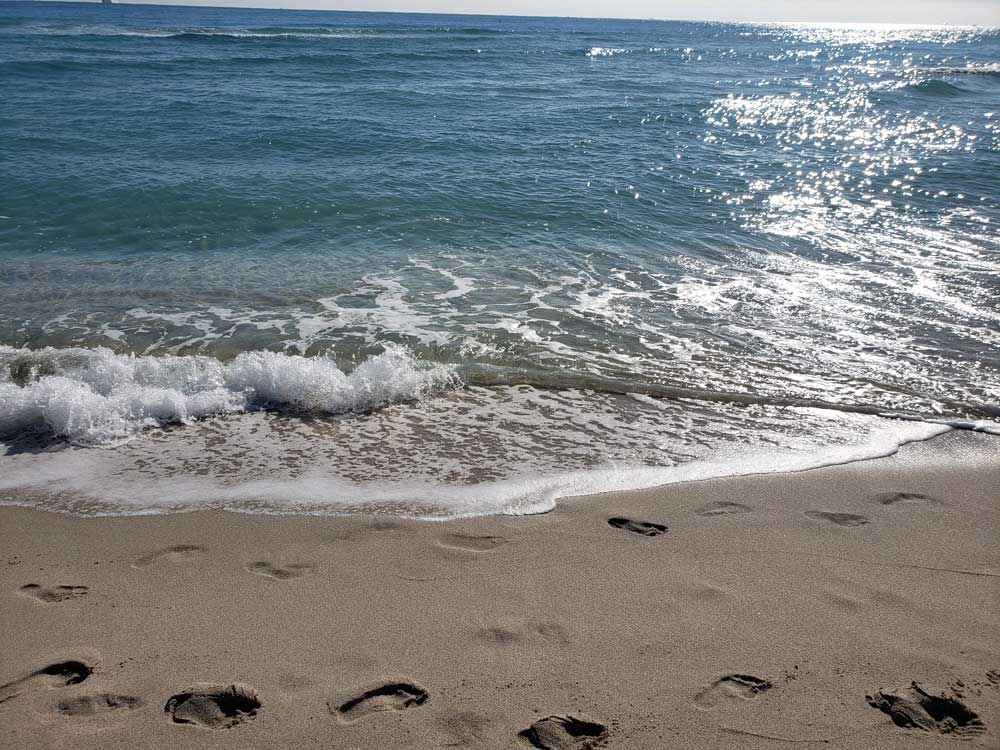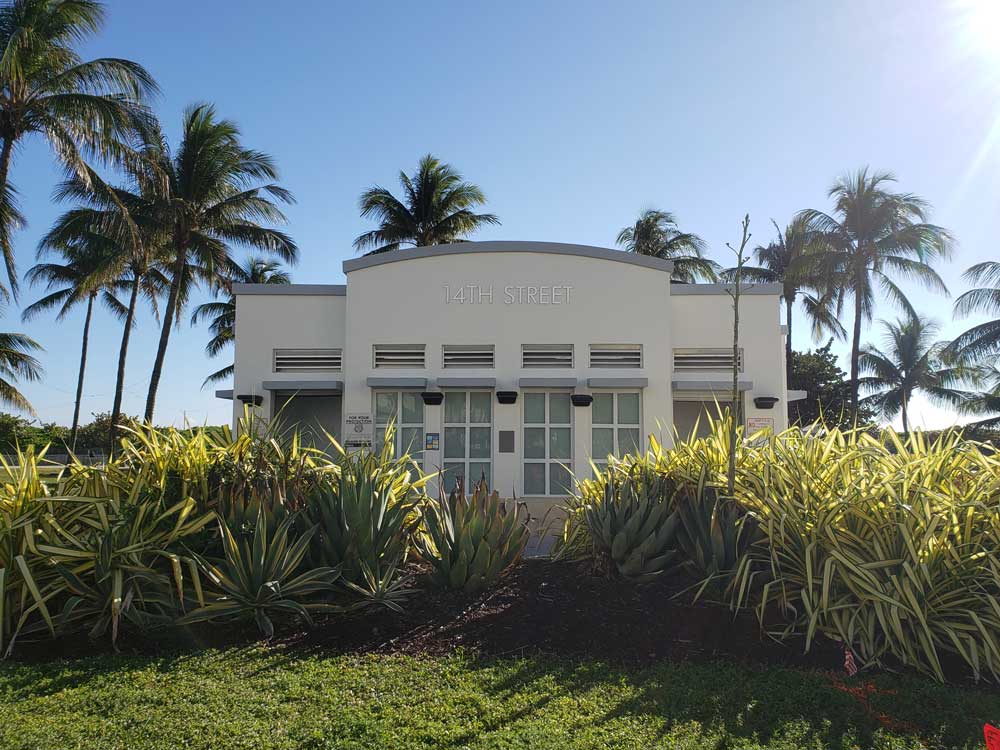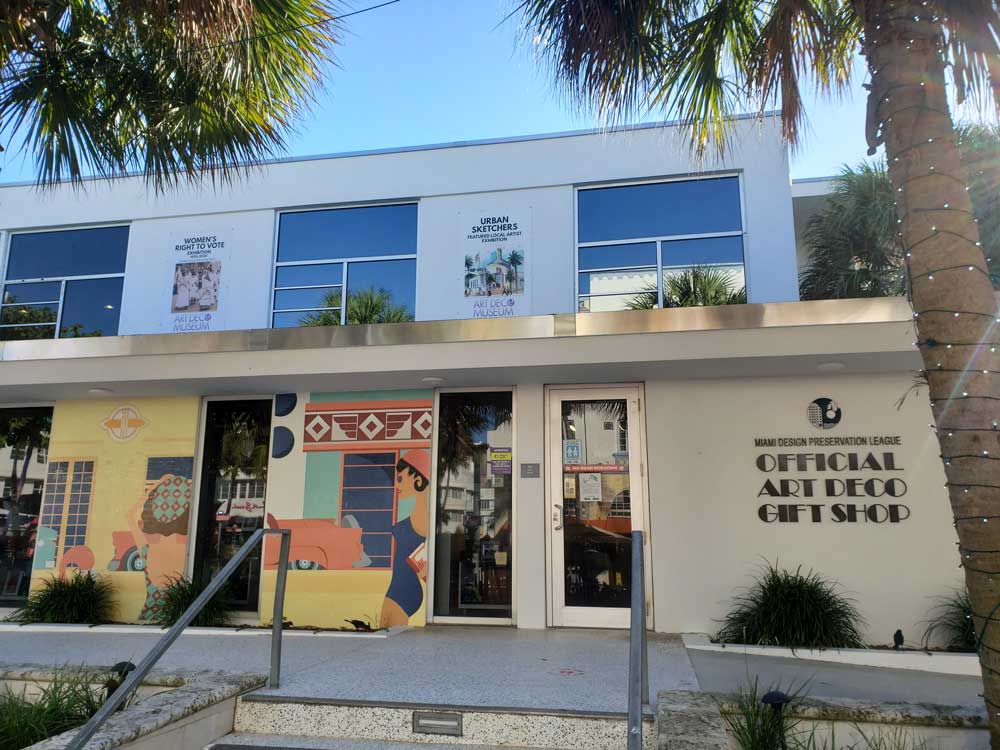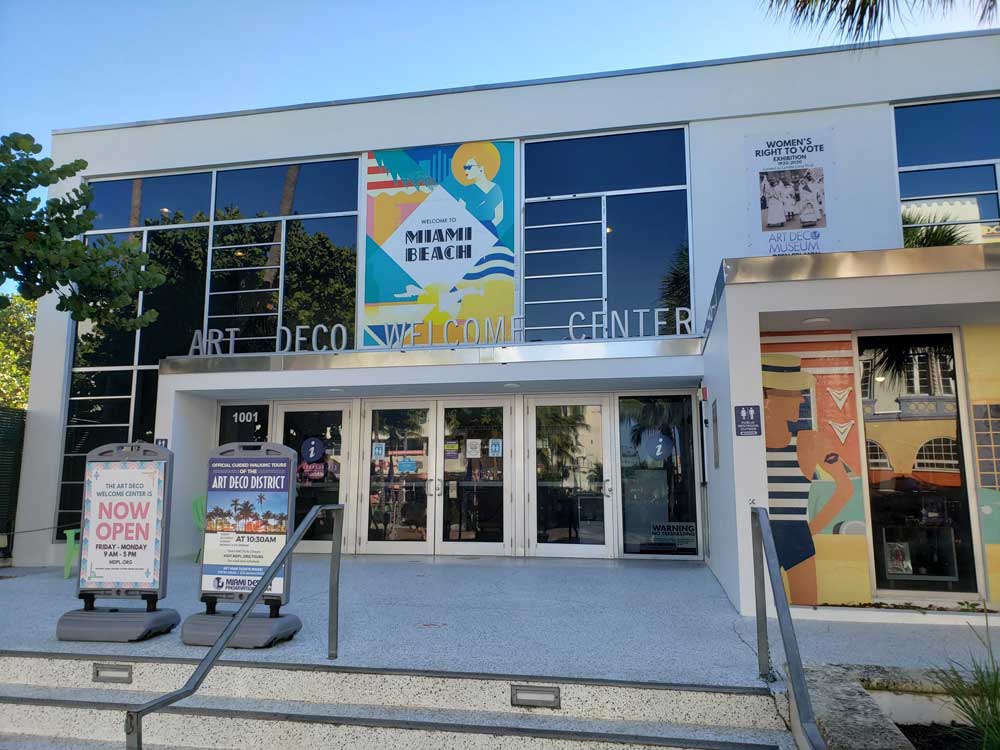Neighborhood in Miami Beach, including Ocean Drive, known mostly for its Art Deco hotels and restaurants/bars, many of which have been prominently featured in numerous movies and media
General Information
Getting There
Get on I-95 N from S Miami Ave. Get on FL-907 N/Alton Rd in Miami Beach from MacArthur Causeway. Follow FL-907 N/Alton Rd and 11th St to Pennsylvania Ave.
Overview
South Beach is a neighborhood in the city of Miami Beach, located due east of Miami between Biscayne Bay and the Atlantic Ocean. The area encompasses Miami Beach south of Dade. Ocean Drive is known mostly for its Art Deco hotels and restaurants/bars, many of which have been prominently featured in numerous movies and media. Among the most popular is the 1939 Colony Hotel, known as the most photographed art deco hotel. Renovated as a boutique hotel, it has been featured in cameos in scores of movies and TV shows, including the series Dexter. The exterior of the Carlyle Hotel was used for the Birdcage drag club in the 1996 comedy The Birdcage. In July 2020, Miami banned cars on Ocean Drive to create a pedestrian thoroughfare and increased sidewalk seating.
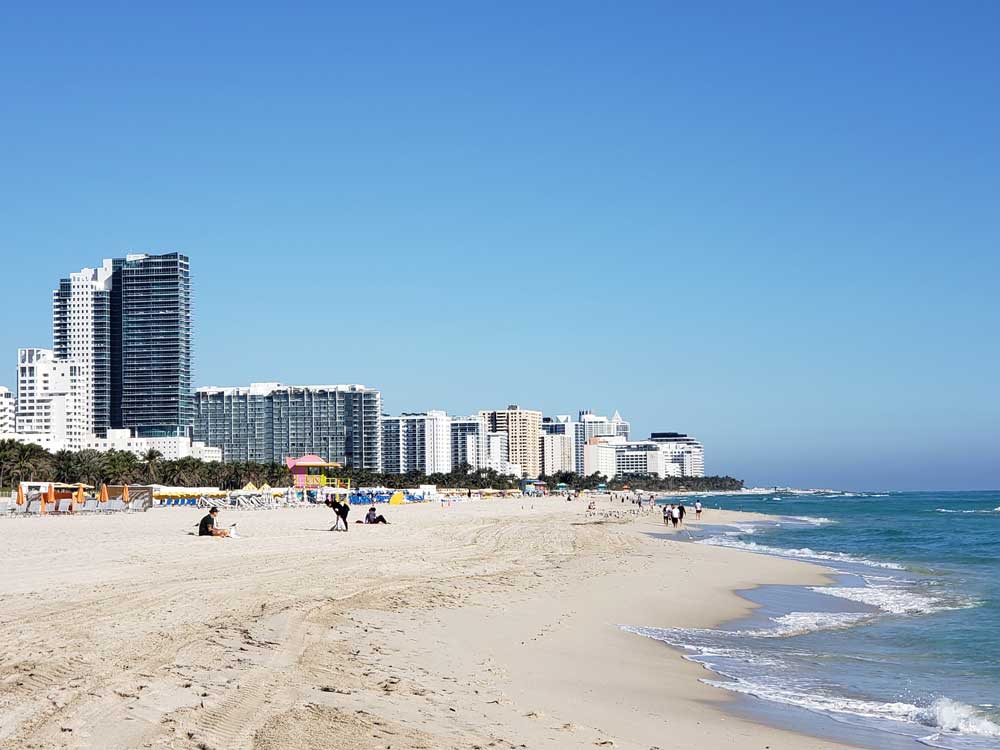
The Sunray Apartments were featured in the movie Scarface (1983). The 2002 video game, Grand Theft Auto: Vice City, based the look of its eponymous city on Miami. Ocean Drive is also the location of the famed Casa Casuarina, the residence of the late Italian fashion designer Gianni Versace. Since his death, the house was sold and adapted for use as a boutique hotel. It is one of the most photographed houses in North America.
In both daytime and at nightfall, the South Beach section of Miami Beach is a major entertainment destination with hundreds of nightclubs, restaurants, boutiques and hotels. Another unique aesthetic attribute of South Beach is the presence of several colorful and unique stands used by Miami Beach's lifeguards on South Beach. The towers instantly became symbols of the revived City of Miami Beach.
History
Carl G. Fisher, a successful entrepreneur who made millions in 1909 came to the beach in 1913. His vision was to establish South Beach as a successful city independent of Miami. In the 1930s, an architectural revolution came to South Beach, bringing Art Deco, Streamline Moderne, and Nautical Moderne architecture to the Beach. This historic district holds the largest collection of Art Deco buildings in the world, an umbrella term covering a range of styles such as “Streamline”, “Tropical”, and “Med-deco” and built mostly between the Great Depression and the early 1940s. Notably, the architectural movement reached Miami after the city's real estate market took a downturn in 1925, and the "Great Miami Hurricane" of 1926 that left 25,000 people homeless throughout the greater Miami region. The designs are often described as evoking technological modernity, resilience, and optimism. The Miami Beach Art Deco Museum describes the Miami building boom as coming mostly during the second phase of the architectural movement known as Streamline Moderne, a style that was “buttressed by the belief that times would get better, and was infused with the optimistic futurism extolled at American's World Fairs of the 1930s.”
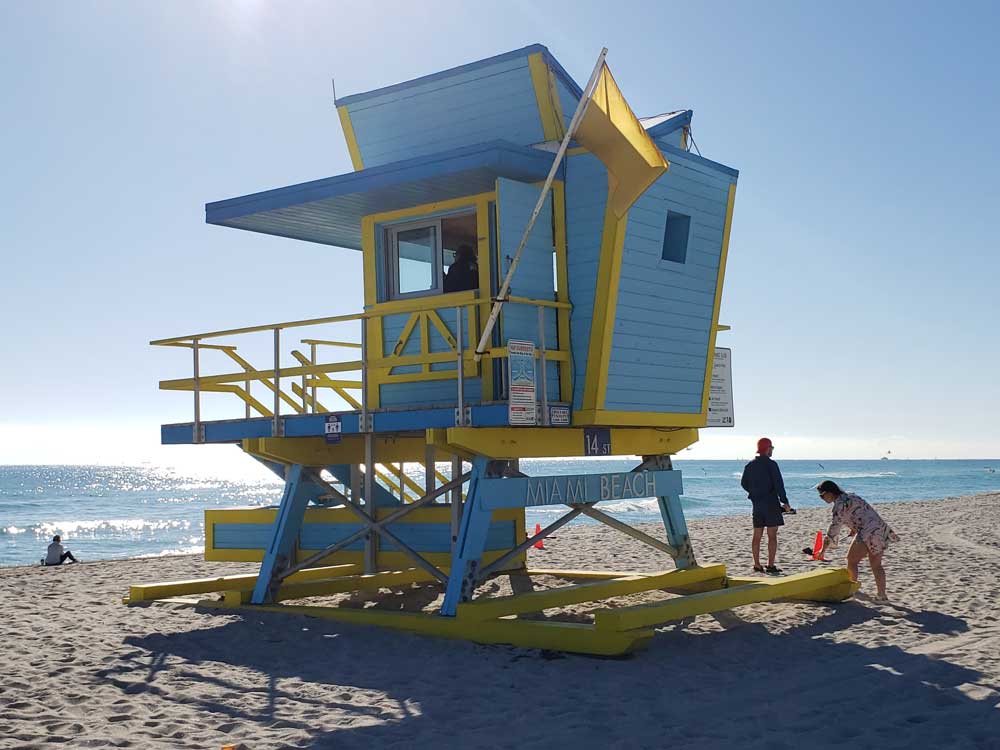
While many of the unique Art Deco buildings were lost to developers in the years before 1980, the area was saved as a cohesive unit by Barbara Baer Capitman and a group of activists who spearheaded the movement to place almost one square mile of South Beach on the National Register of Historic Places. The Miami Beach Architectural District was designated in 1979. It is now a popular living destination for the wealthy and condominium units in the upscale high rises sell for millions.
LGBT Community
South Beach is considered a hub of LGBT lifestyle. In the 80s and 90s South beach was the center of Florida's gay life and nightlife. It is home to many hotels, clubs, and nightlife that caters to the LGBT community. Ocean Drive is a hotspot to socialize and there is LGBT friendly shopping and cocktailing on Lincoln Road.
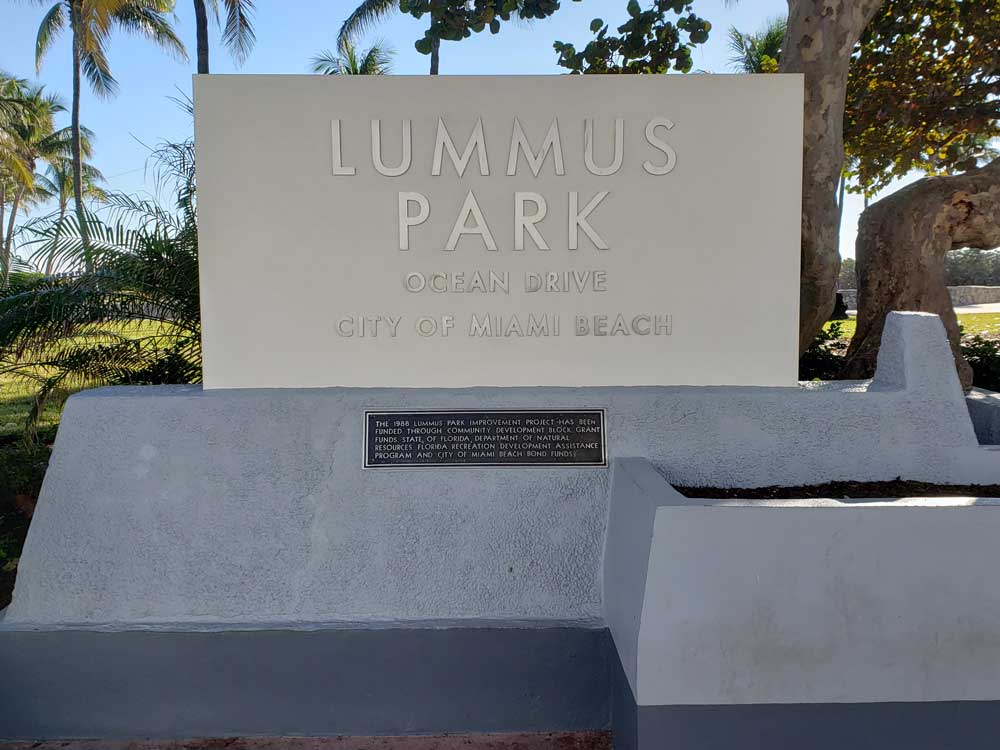
Lummus Park
Lummus Park is a 74-acre public, urban park in Miami Beach. When redesigned and improved in the mid-1980s, it became part of the project for the redevelopment of what is now the Miami Beach Architectural District of South Beach. Along Ocean Drive, the park shows grassy areas and palm trees, alongside volleyball courts and pull up bars. A wavy pedestrian walk, called the Promenade, separates the grass of the park and the beach up to 21st St, where it turns into boardwalk. The sidewalk is inspired by Brazilian landscape architect Roberto Burle Marx's oceanfront walk along Copacabana Beach near Rio de Janeiro. The park is a great backdrop for photo shoots, which happen frequently, and it initially became the location for many scenes from the television series "Miami Vice". The Miami Beach park and the Deco streetscape along Ocean Drive continue to be featured in "Miami" location shots for television and movies
This article uses material from the Wikipedia article "South Beach" which is released under the Creative Commons Attribution-Share-Alike License 3.0
Featured Locations
Art Deco Hotels
Collection of Photographs of South Beach's Famous Art Deco Hotels
Casa Casuarina
Opulent mansion formerly owned by Italian designer Gianni Versace
Espanola Way
Vibrant Dining in Shopping Street in Miami Beach
Las Olas Cafe
Laid-back eatery serves up fresh-squeezed juices, legendary Cuban sandwiches & all-day breakfast.
